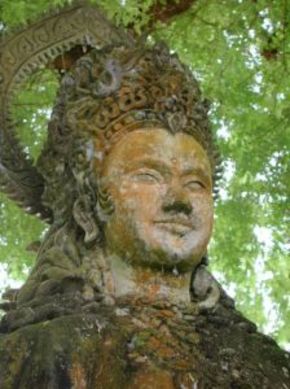Lao People's Republic Travel Guide
Lao People's Republic Travel Guide: General Information
‘A page from a Romance’ that is what Laos or the Lao People's Republic is – very simple, very relaxed, very original and yet largely unexplored – something that is earning the country a great following among tourists. Until 1988, Laos was closed to outsiders, but now that the country has opened up guiding your steps towards Laos will be an excellent idea. Visit independently or tour with an travel-agency, you will come to like every aspect of your Laos-trip…be it the arresting landscapes of forested mountains and rivers, the nation’s rich history, its UNESCO World Heritage Sites, its friendly populace, its abundant flora and fauna, the plethora of activities and so on. You will love Laos as it unfolds before you during your trip. Just pay heed to advices from authorities and you will never have any trouble.
Lao People's Republic Travel Guide: Key Facts
Capital City: Vientiane
Area: 236,800 sq km
Population: 6, 320, 000
Monetary Unit: Kip (LAK)
Official Language: Lao
International Dialing Code: 856
Lao People's Republic Travel Guide: Popular Tourist Destinations
- Vientiane: Nestled in the Mekong River valley, the capital city of Laos is a revelation and famous for its picture-postcard settings. The greatest attraction is undoubtedly the 16th century Buddhist Stupa, Pha That Luang. Other must-see city-sights include Buddhist temples like the famous Emerald Buddha Temple Haw Pha Kaeo (it is now a museum), Wat Si Saket, Wat Si Muang, parks like the Wat Xieng Khouang and a number of cultural venues and museums. The city has many instances of colonial architecture like the Patuxai (the Victory Monument). A visit to the Talat Sao (Morning Market) will take care of all your shopping-needs.
- Luang Prabang: The ancient royal capital and a UNESCO World Heritage Site, Luang Prabang is both scenic and culturally/historically significant. The city has as many as 32 temples besides the Haw Kham Royal Palace (which is now a museum). While the Phu Si Hill promises you an eyeful of the city’s mesmerizing greenery and its colorful blooms blending with the multi-hued temples and the many colonial structures, visits to other natural sights like the Kuang Si Falls and the Pak Ou Caves must be included in your itinerary.
- Other Popular Destinations: Laos is full of interesting sights – some cultural or religious and some natural sights – across its length and breadth. If you are looking forward to an all-inclusive tour, plan provincial-tours. The Xiang Khouang province, for example, is where you get to see the different sites of the Plain of Jars; but it is also famous for its stunning limestone karsts as well as its verdant mountains and valleys. The Savannakhet province is full of tourist-destinations. It is in this province that you get to see the 5th century-built World Heritage Site, Wat Phu Champasak (the Angkor-style Khmer Temples). The province’s Champasak town is famous for its colonial-era French architecture. Vang Vieng is a backpackers heaven and promises lots of activities from biking, hiking and trekking to kayaking and rock climbing. The other star-attraction in this province is the Sii Pan Dhan (Four Thousand Islands) on the Mekong River, which in itself is a sight for its many rapids and the Khon Phapheng waterfall and the resident Irrawaddy dolphins.
Lao People's Republic Travel Guide: Economy and Infrastructure
Lao People's Republic has one of the poorest economies in the world and a considerable section of its populace (around 30%) lives below the poverty line. Agriculture is the chief economic activity – it employs about 85% of the population and contributes about 50% of the GDP. Post 1988, Tourism has picked up pace and now manufacturing (chiefly light manufacturing, like textiles and garments) has also gained prominence.
Laos receives foreign aid to tap the potential of its various resources, which include its forest-cover, its mineral resources and its water-resources; consequently, hydro-power generation, logging and mining are also becoming crucial to the economy.
The lack of infrastructure has been the biggest obstacle – something that has hindered the nation’s all-round progress. Be it transportation or telecommunication, the villages/rural areas have always been ignored. Major urban centers have road links and various means of transport but the rivers continue to be the only help for villagers. What is most unfortunate is that some of the villages do not have electricity, although electricity is one of Laos’ few exports.
Lao People's Republic Travel Guide: Culture
Laos is principally inhabited by ethnic Lao-people (although you will come across a handful of people of Chinese and Vietnamese origin). Theravada Buddhism is the religion followed by the majority and it has been the chief influence behind the evolvement of Lao-culture – an influence that is clearly pronounced in the art, architecture, literature, music, religious festivities and the way of life.
Things about Lao People's Republic you may be interested in
Be the first who requests a site listing for this page.Recent Travel Guides from Lao People's Republic
Viangchan, or Vientiane, the mysterious capital city of Laos, seems almost like an otherworldly place for foreign visitors. Viangchan is worlds apart from the usual crowd and hustle-bustle of other Asian capitals. The city is permeated with a calm, almost sacred atmosphere that can capture the imagination of even the most down-to-earth visitor.... Read more »


